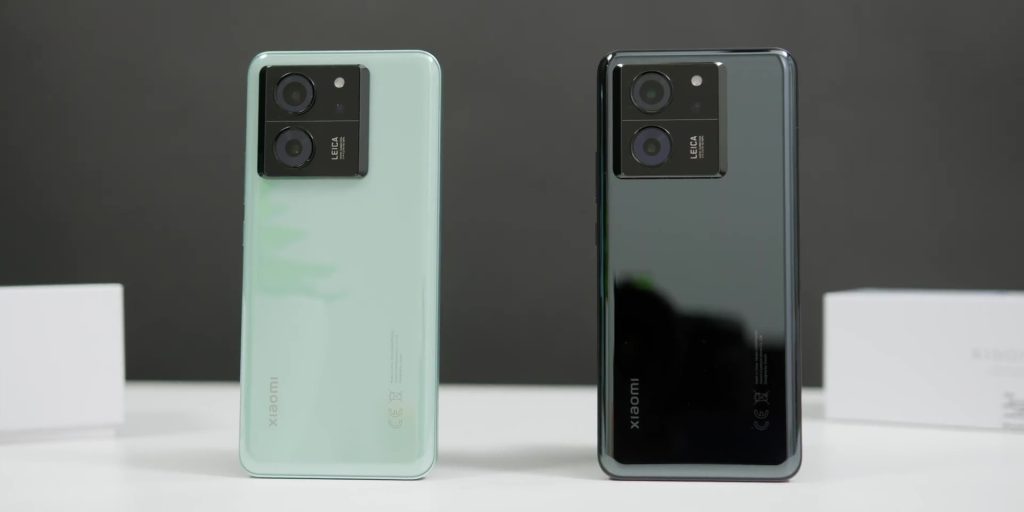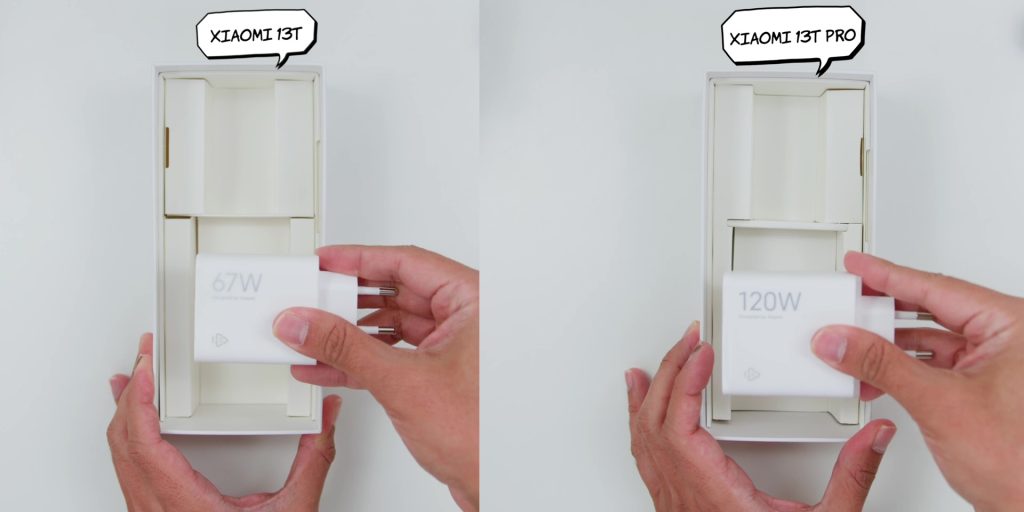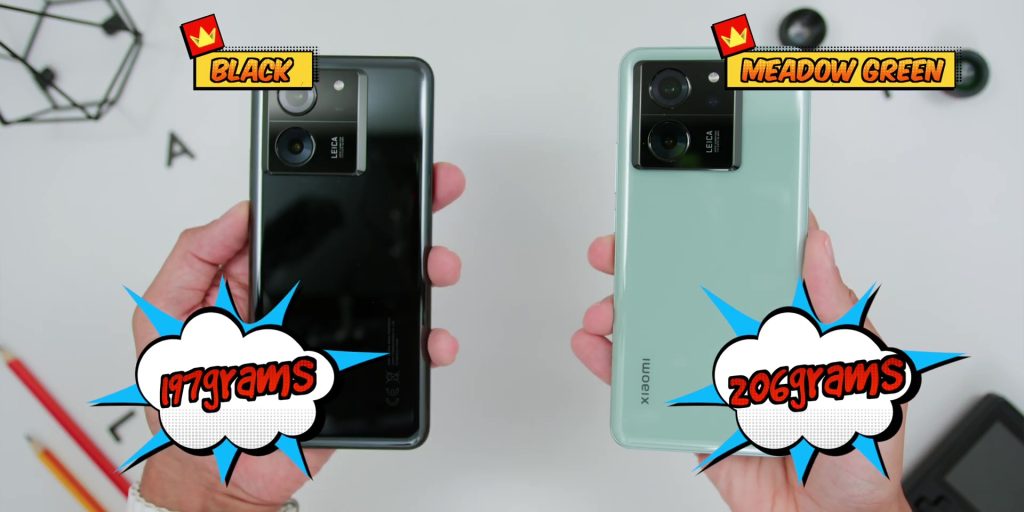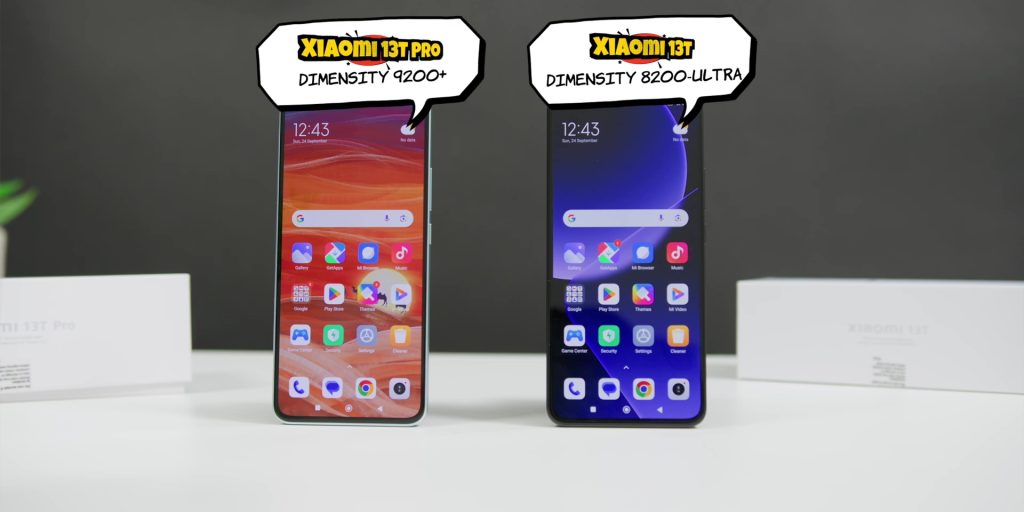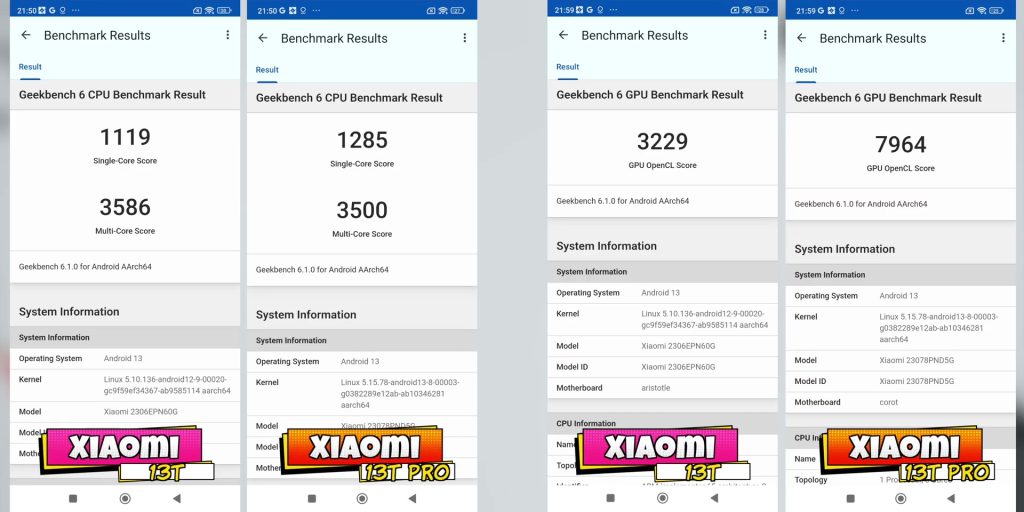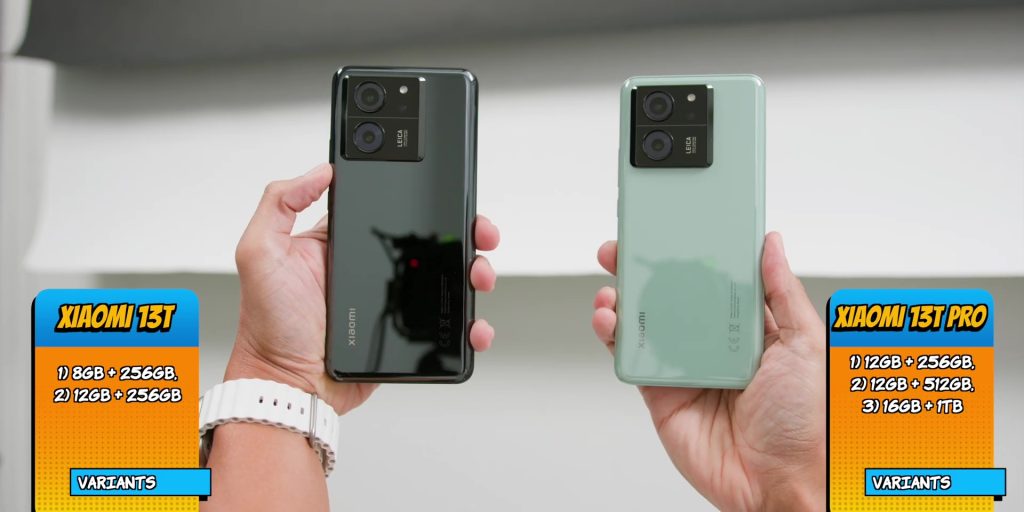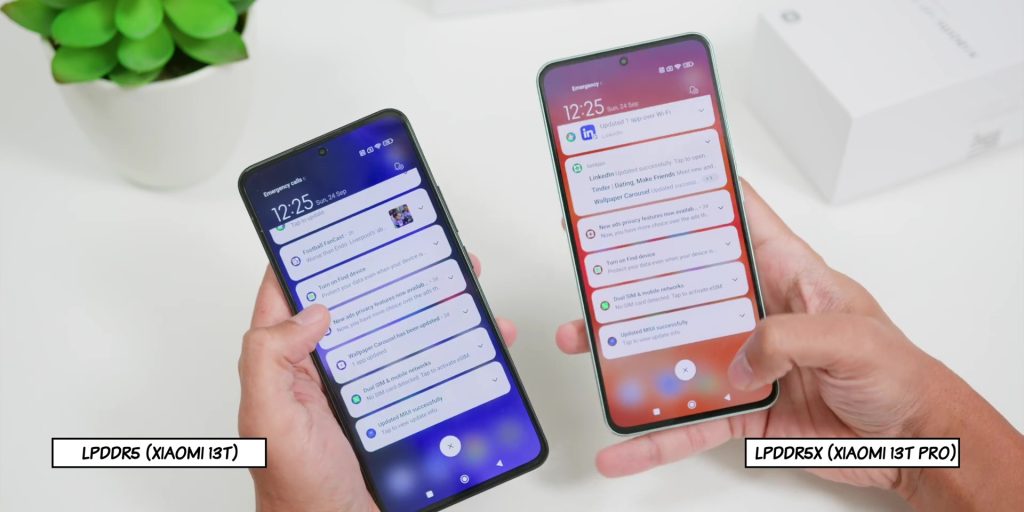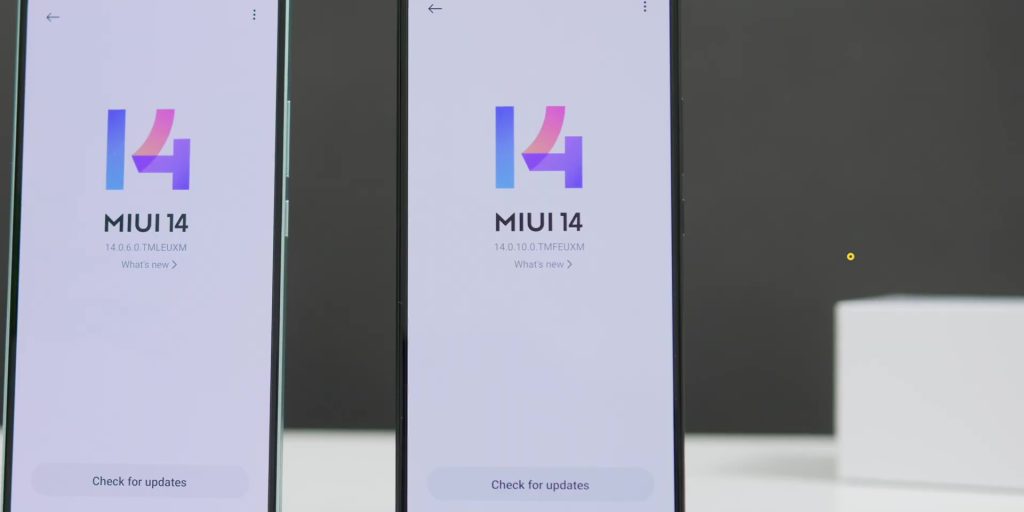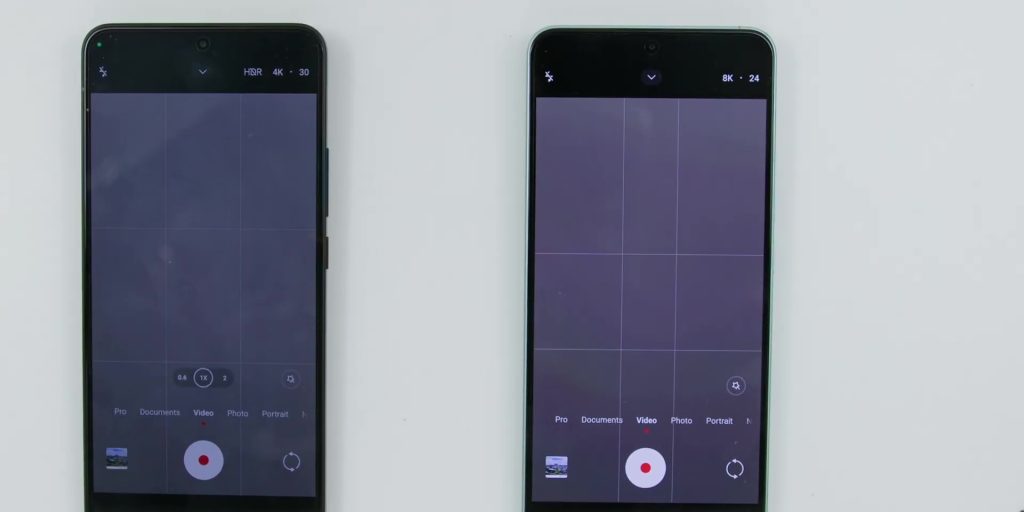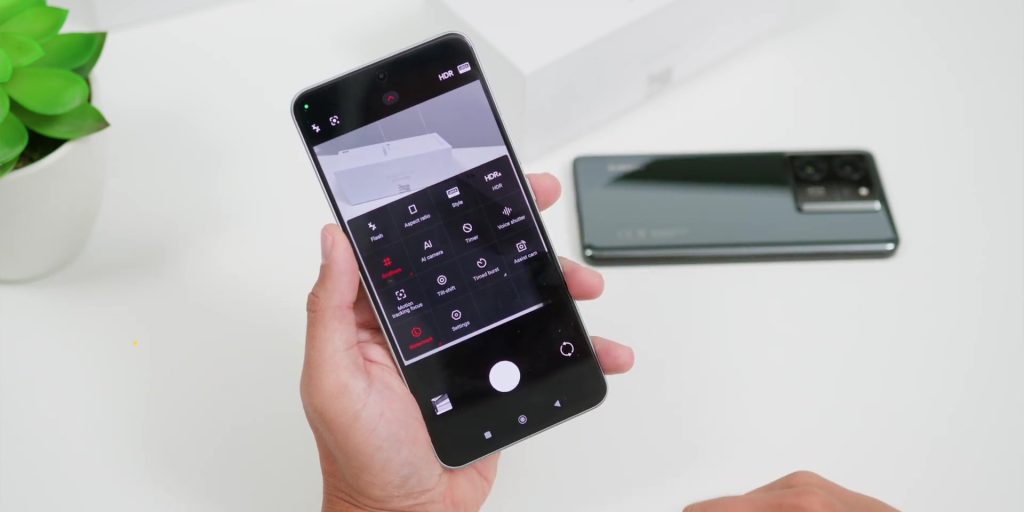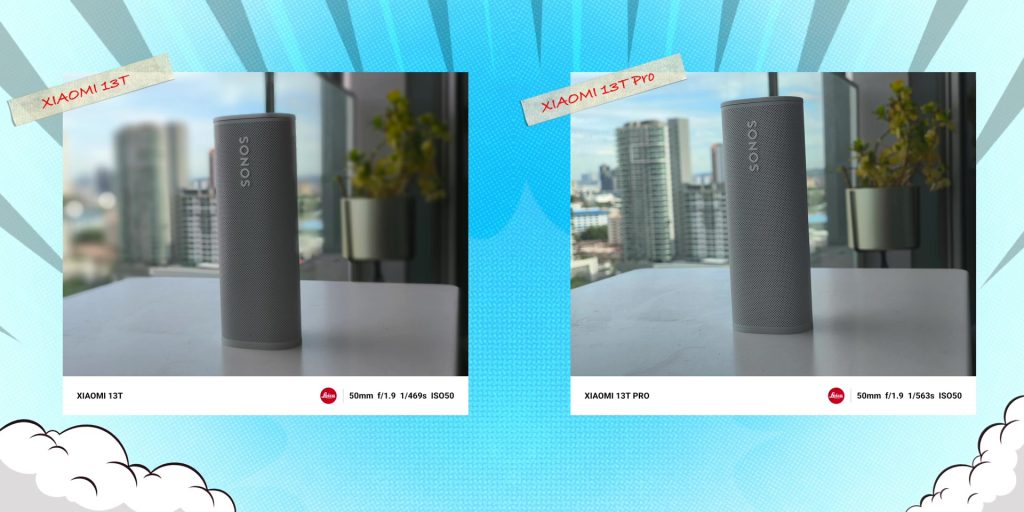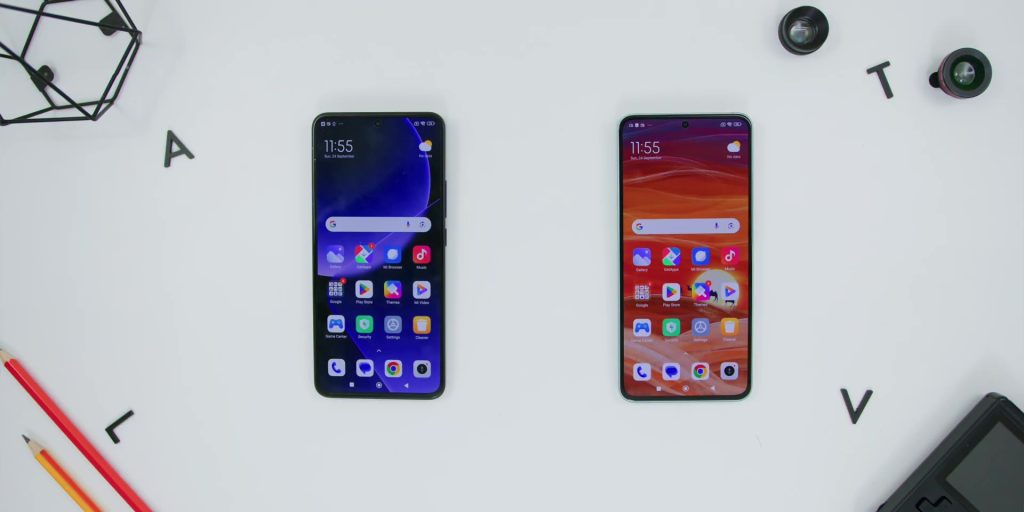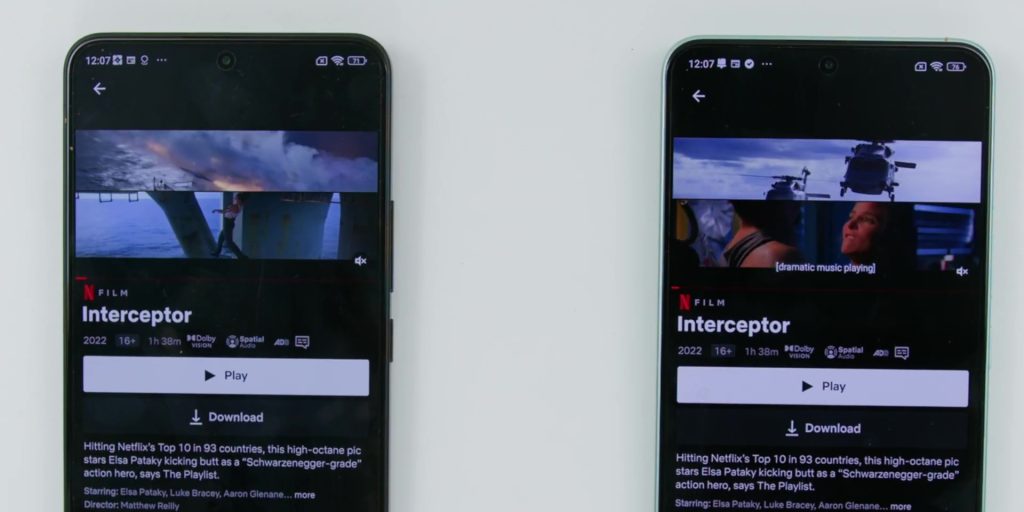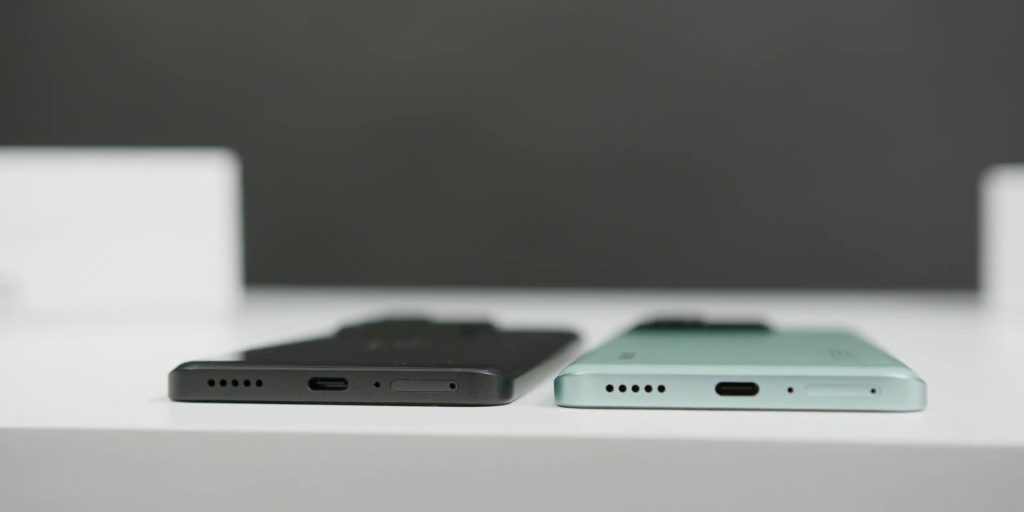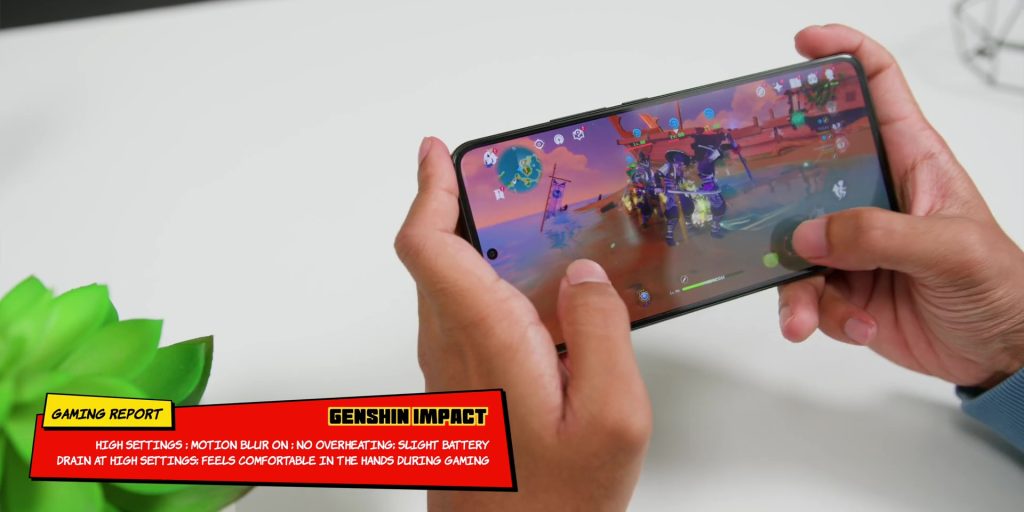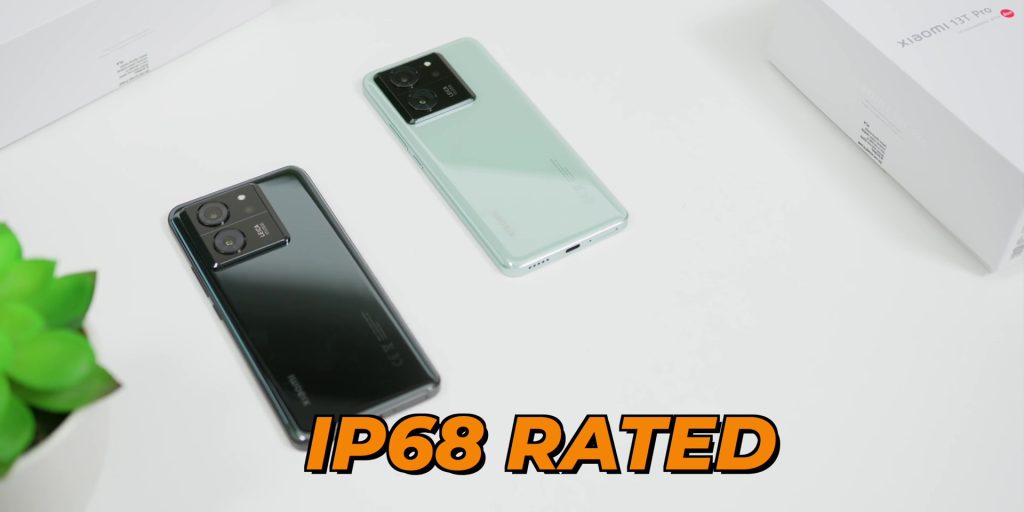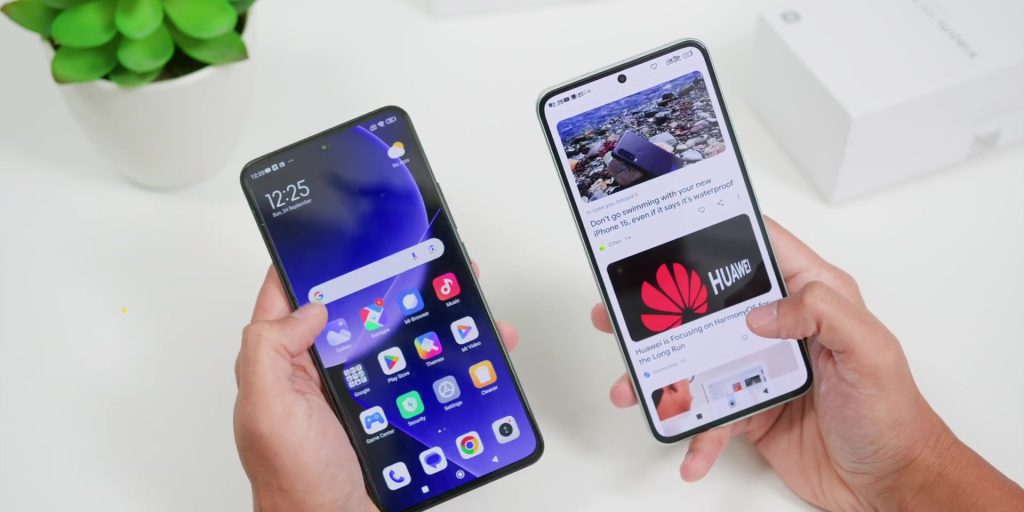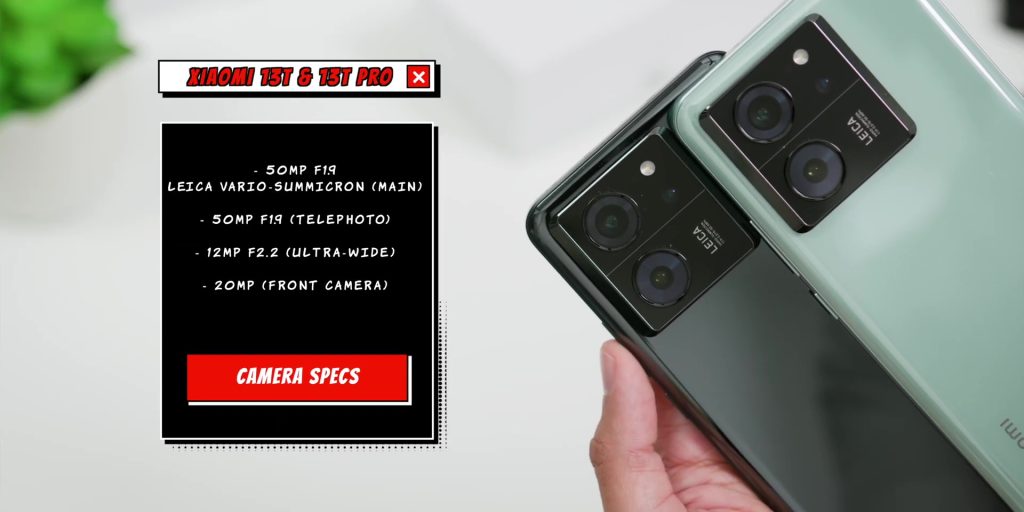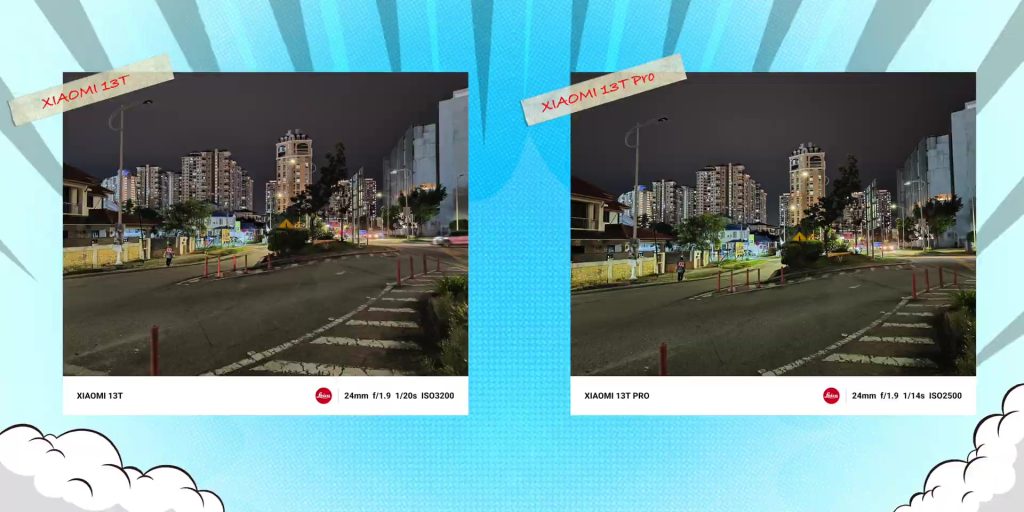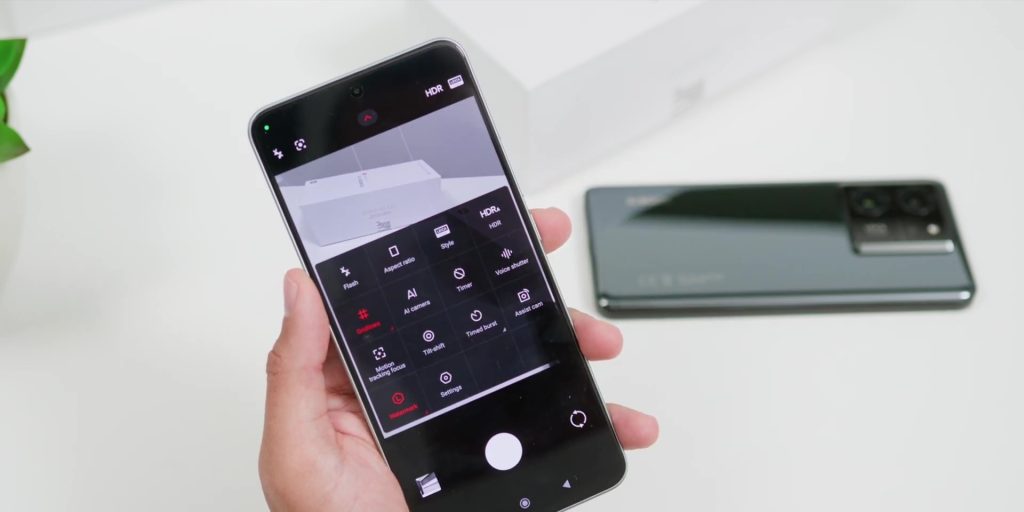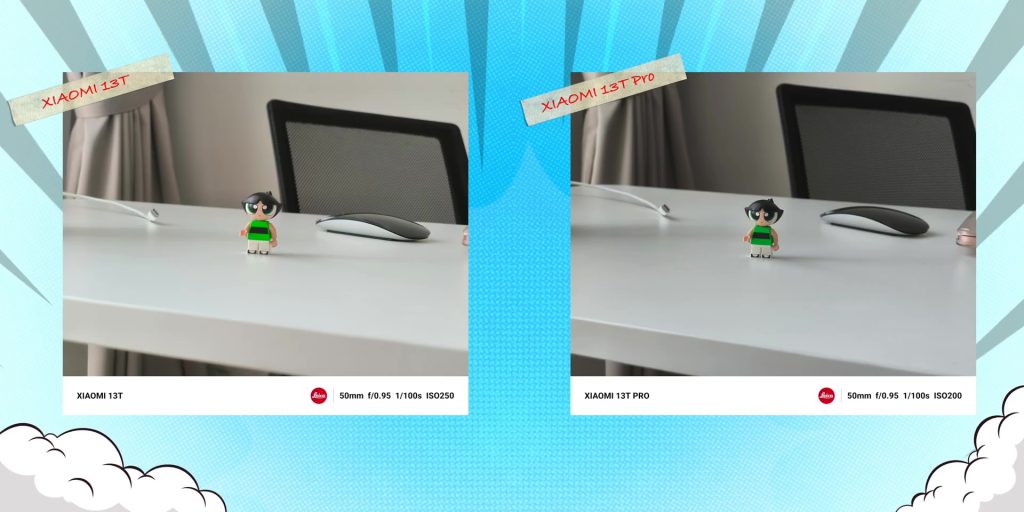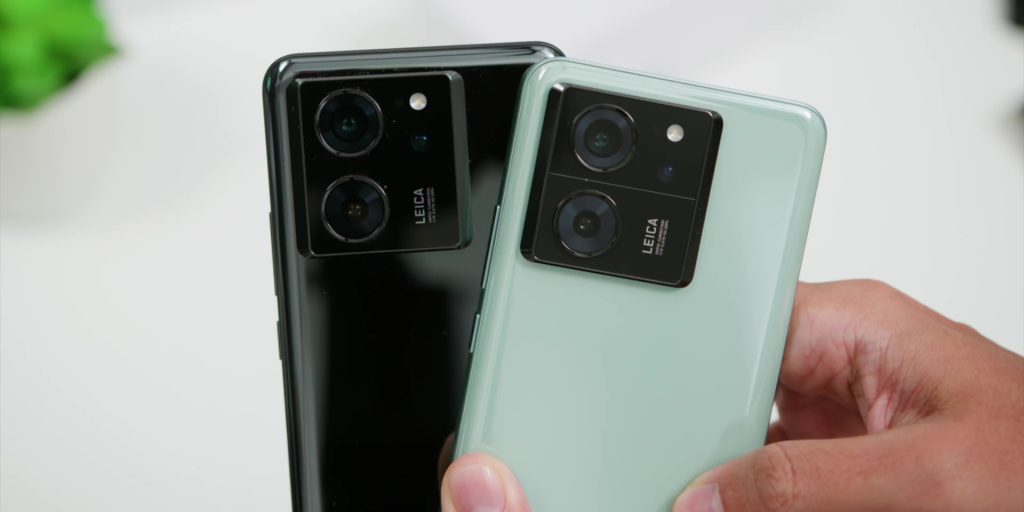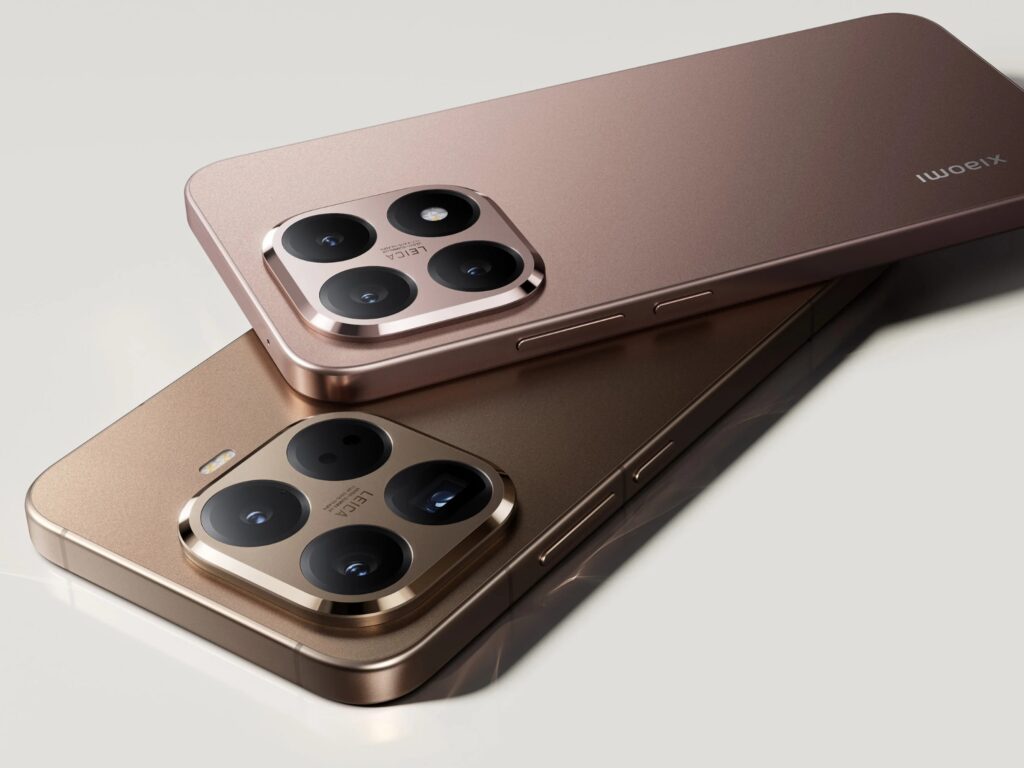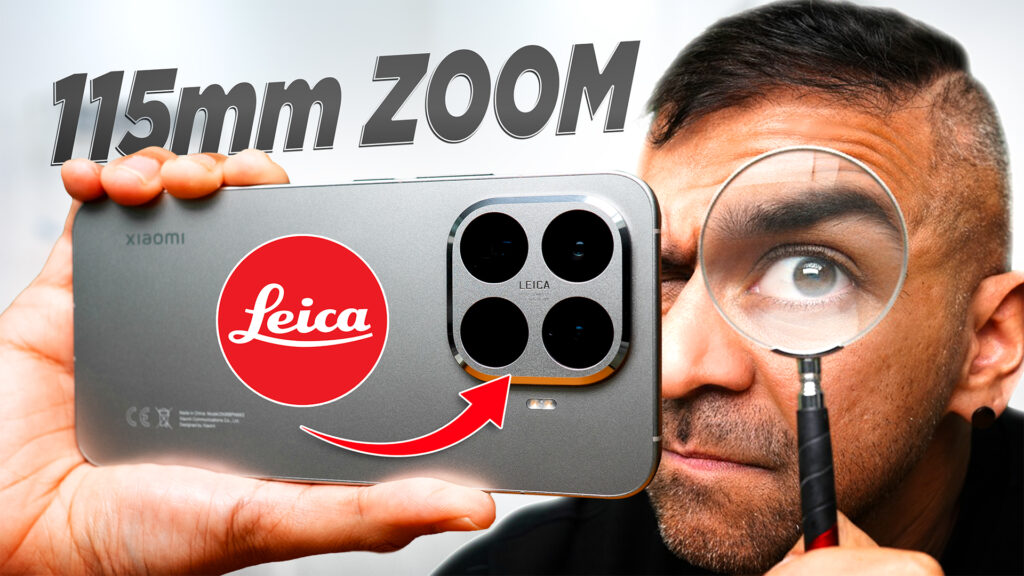This is the new Xiaomi 13T and 13T Pro. Both look the same, have the same Leica Professional Camera System, the same massive refresh rate, the same screen, and the same battery capacity.
So what’s different? Let me tell you all about it.
Left: Xiaomi 13T Pro (Meadow Green)
Right: Xiaomi 13T (Black)
Differences
The difference in the unboxing process, firstly, is that the Pro comes with a higher 120W HyperCharge adapter, and the non-Pro comes with a 67W Turbocharging.
And when it comes to the build quality, the 13 Pro is slightly heavier (206g vs. 197g), particularly for these two color variants (Meadow Green & Black). Based on me holding these two phones side by side, you can tell the difference.
Then, both MediaTek chipsets that the phone comes with are slightly different chips, but they have the same 4nm process.
While there’s a tiny bit of difference in the benchmark scores for the CPU, there’s a huge difference in GPU scores. But this could be because of the higher RAM configuration that I have on the Pro, so I would take that with a grain of salt. But I will reveal my gaming test later on, so stay tuned for that.
Speaking of the RAM, the configuration of the RAM and storage is also different between both.
Non-Pro: 8GB+256GB, 12GB+256GB
Pro: 12GB+256GB, 12GB+512GB, 16GB+1TB
Then, the storage speed on the Pro is a UFS 4.0, compared to version 3.1 on the non-Pro, and the RAM quality is also faster on the Pro variant as well, LPDDR5 for the non-Pro, and LPDDR5X for the Pro.
The software updates are different – not by a few patches, but quite a difference, where the Pro is at 14.0.6 and the non-Pro is at 14.0.10. Here’s where I find it quite confusing because why is it that the non-Pro has the latest version compared to the Pro?
Both have the same Leica technology and camera setup. The Pro can record up to 8K 24 FPS. So, is that a deal breaker? Well, not for me because I still don’t plan on recording 8K video on my smartphone since it takes up a huge file size. So, unless you’re planning on shooting the next Marvel blockbuster on your smartphone, you’re all good.
I even took a photo side by side between both of the cameras. Since this has the Leica Photographic Styles, I’ve always been a fan of the Leica Vibrant when I use the Xiaomi 13. Hence, I’ve been using this mode all the way.
Based on the images I’ve taken, it looks identical, especially in terms of dynamic range and quality perspective.
However, the Pro seems to nail portrait mode shots way better on the edges, especially in this particular image of the Sonos Roam speaker.
Other than that, even with the difference in the shutter speeds when the pictures were taken, you have pretty much the same image.
Finally, the Pro has Wi-Fi 7, making it more future-proof compared to Wi-Fi 6 on the non-Pro. Again, not a huge deal breaker over here.
Alright, now we know what the differences are. Let’s talk about what makes these phones worth bragging about.
Display & Gaming
Firstly, the display and content consumption are really something worth shouting about. With its current position in the smartphone pecking order, it is amazing how it not only has a very high 144Hz refresh rate but also goes up really bright, up to 2600 nits of peak brightness, which is brighter than our Malaysian Ringgit exchange values in the future.
This display is also a video consumption King as it has Dolby Vision, HDR10+ and Dolby Atmos support for its speakers, even though it has just dual speakers.
Next, let’s talk about the gaming performance. The good news is that both can handle games like a beast, and whether or not you go with the Pro or non-Pro, you will be very satisfied with the gaming performance on both, even during a very long gameplay.
Both devices are also IP68 rated, which is great for a smartphone within this range of the T-Series from Xiaomi.
Now, another important thing to highlight is that both of these phones’ software will be getting 4 years of Android updates and 5 years of security updates, something that a lot of non-flagship smartphones usually lack. So, that’s great to know.
Camera
Finally, the cameras on these two variants performed really well. If you loved the pictures that you saw in my review of the Xiaomi 13 flagships, you are going to love the images being produced on these two phones.
Other than the images you saw earlier, you’re going to love how well the selfie images were produced too, thanks to its improved image processing.
The phone system did very well in 4K video recording at 30 FPS, all thanks to the Leica Professional Optical Lens coating that reduces glare during the day and also at night.
This new camera interface is also really nice, very straightforward to go through each setting and the menu, way much easier.
Then the dedicated focal length effects like the 35, 50, and 90mm lenses. And of course, the Leica filters are also a blessing to make your photos stand out compared to other smartphones.
Official Pricing
Xiaomi 13T Pro:
12GB+256GB – RM2,499
12GB+512GB – RM2,699
16GB+1TB – RM3,499
Xiaomi 13T:
8GB+256GB – RM 1,799
12GB+256GB – RM1,999
–
So what do you think? Which variant you would go for – the Pro or non-Pro?

